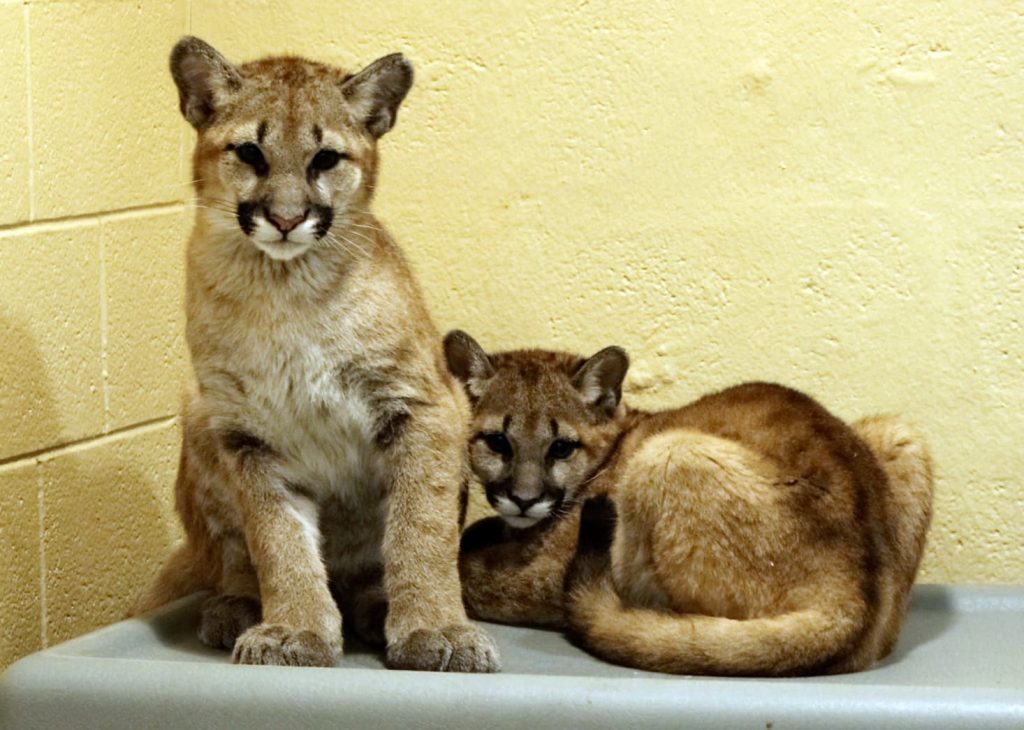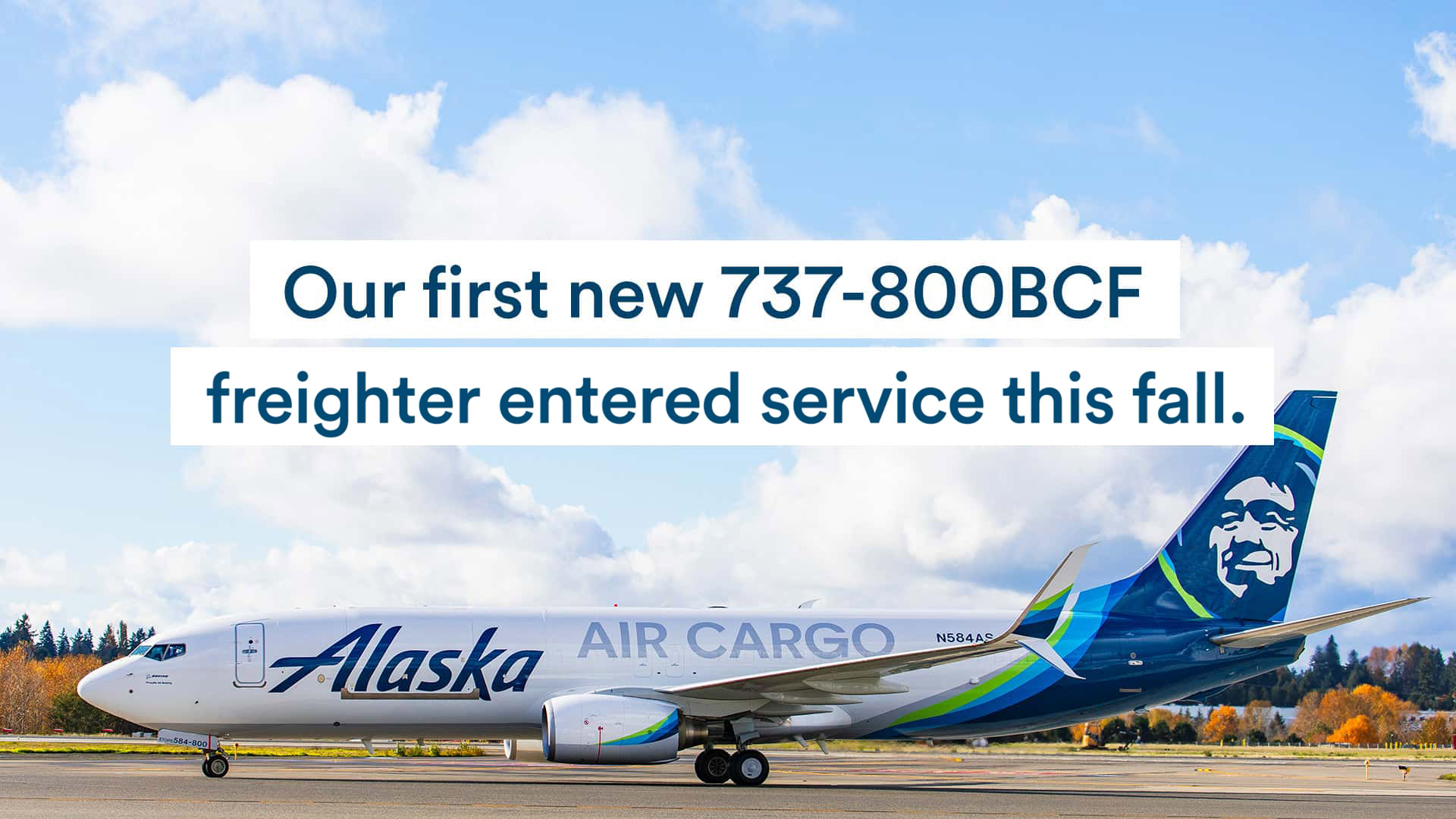Learn more about shipping live animals through our Pet Connect service
 Elbroch, left, and his sister Olympia in Philadelphia. (Photo courtesy of Philadelphia Zoo)
Elbroch, left, and his sister Olympia in Philadelphia. (Photo courtesy of Philadelphia Zoo)
Two cougar kittens orphaned in Southwest Washington are now the coolest cats in the Northeast, settling into their new home at Philadelphia Zoo after a cross-country flight in the care of Alaska Air Cargo.
The siblings were only about 12 weeks old, hungry and dehydrated, when they were discovered wandering through farmland by themselves this summer, said Rich Beausoleil, bear and cougar specialist for the Washington State Department of Fish and Wildlife. “When they get a little older, they have a better chance of surviving, but these were spotted kittens, so we knew there was no chance for them to make it on their own,” he said. Cougars typically spend their first 16 to 18 months with their mom, and “there’s a lot of teaching that goes on during that time,” he said.
 The siblings soon after they were rescued. (Photo courtesy of Washington State Department of Fish and Wildlife)
The siblings soon after they were rescued. (Photo courtesy of Washington State Department of Fish and Wildlife)
Beausoleil put out an alert through the Association of Zoos and Aquariums (AZA)-certified network, and Philadelphia Zoo leaped at the opportunity to give the siblings a home in their extensive Big Cat Falls exhibit, which has room for its residents to patrol sprawling territories. “We teach people about the plight of big cats and apex predators in an engaging space that mimics their natural environment,” said Maggie Morse, Philadelphia’s curator for carnivores and ungulates (or “teeth and hooves,” as she put it.) “These cubs probably would not have made it without their mother, so we play an important role in keeping the species alive.”
With a home secured for the young cougars (also known as mountain lions and pumas, as Philadelphia refers to them), Beausoleil and Morse mapped out a cross-country transport plan with Alaska Air Cargo, their go-to resource for shipping wild animals.
“We’ve had just a great relationship with Alaska over the years,” said Beausoleil, who estimates he’s shipped more than 50 wild animals for the state of Washington using Alaska Air Cargo’s Pet Connect service. He prioritizes nonstop flights out of Seattle to eliminate layovers, and in the summer, he looks for overnight options to keep the animals cool.
“We appreciate the friendly cargo booking agents at Sea-Tac, who always take a keen interest in the wild animals and their safety.”
Richard Beausoleil, Washington state cougar and bear specialistOnce a vet certified the kittens were healthy enough for the cross-country flight, Beausoleil tucked them into a sturdy metal crate with good ventilation, a nest of straw on top of towels, drinking water secured to the side of the crate and a toy they could chew on. “They stay pretty calm, and there’s not much in there that they can hurt themselves on because it’s all smooth on the inside,” he said.
While the kittens were in transit, teams on both sides of the country stayed up through the night texting updates on their progress, Morse said. “We really rely on Alaska Airlines to make sure that our animals are taken care of in the sky,” she said. “With this precious cargo, we trust you guys to get them here and let us know along the way.”
 (Photo courtesy of Philadelphia Zoo)
(Photo courtesy of Philadelphia Zoo)
Now the brother and sister are busy exploring their new home. “They have logs, they have crates, they have little jungle gyms that we make for babies, and they are just climbing all over it,” Morse said. They are expected to make their public debut this fall in the zoo’s Big Cat Falls exhibit space.
And the siblings have new names: Elbroch, the male, is named in honor of Mark Elbroch, the leading puma researcher for the Panthera conservation organization, and the female is named Olympia in honor of the capital of Washington, where she was rescued. “They’re chirping at each other — good happy noises and super adorable,” Morse said. “They’re just being rough and tumbly toddlers.”
Beausoleil said tens of millions of Americans visit AZA-accredited zoos each year, turning rescued animals like the cougar kittens into ambassadors for their species.
 The Big Cat Falls exhibit space where the kittens will spend time once they make their public debut. (Photo courtesy Philadelphia Zoo)
The Big Cat Falls exhibit space where the kittens will spend time once they make their public debut. (Photo courtesy Philadelphia Zoo)
“I would much rather see them coursing the hillsides and being the low-density apex carnivore that they are,” he said. “But when you look at the numbers, it becomes a nationwide education campaign. I like to think that people, especially in the Eastern United States where they have never had the opportunity to see these animals, can actually see them and appreciate them — and then maybe be a voice when it’s time to conserve these species.”















